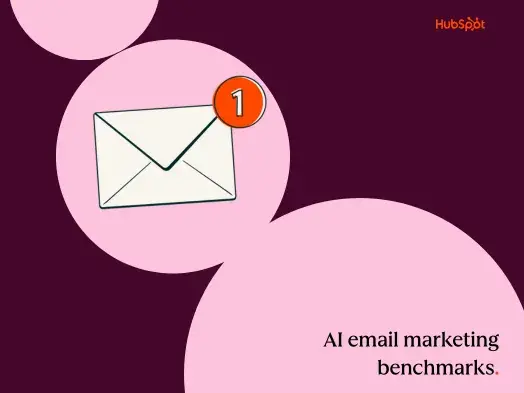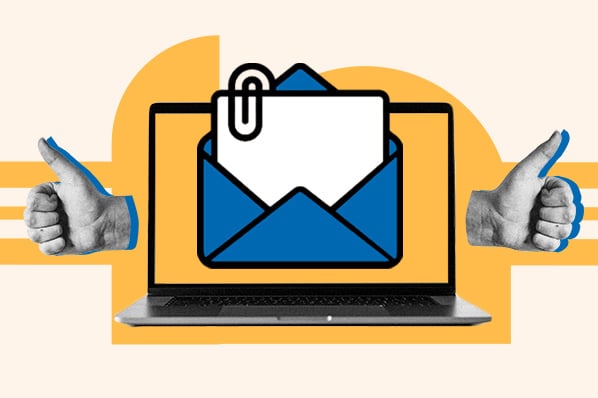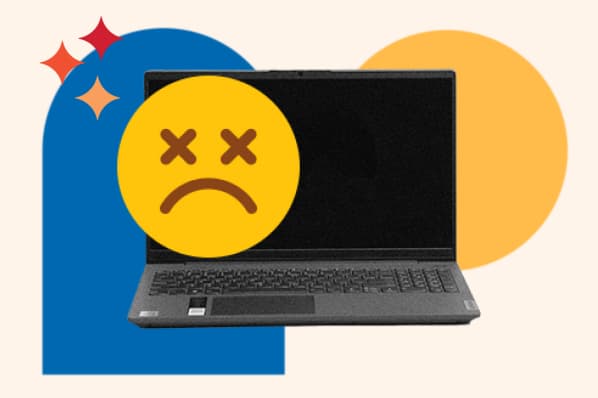Virtually every sales professional who has ever sent emails to any prospects has seen their fair share of messages get stonewalled. Prospects are busy and particular — and exactly none of them want to waste their time on sales emails that don't offer value.
So if you‘re noticing that prospects aren’t giving your emails the time of day, taking a good, hard look at your email strategy is an absolute must — and when you do, you should look out for some key email mistakes that often trip sales professionals up.
Let's take a look at five of the main culprits here.
5 Reasons Prospects Might Be Ignoring Your Emails
1. Your prospect has never heard of your company before.
If your business is completely foreign to your prospect, they’ll automatically be skeptical of your email. They’ve never heard of you or your product, so what are you doing in their inbox? But even if your brand is relatively unknown, you're not totally out of luck.
You might actually have the opportunity to leverage your obscurity to pique a prospect's curiosity — but you can only do that by capturing their attention early. That generally means leading with an interesting or unexpected subject line.
But what makes a subject line intriguing? Well, you really have two main options — you can either be vague or hyper-specific. Here's what those lines might look like:
Vague: “Idea for your team”
Hyper-specific: “How you and [prospect’s coworker] can see [X result]”
If you go vague, you want to avoid being overly sales-y and self-promotional. If you say, “We here at [Your Company] have a great idea for your business,” you undermine your intrigue. Lead with a value proposition, but give them some room to dig deeper.
If you go hyper-specific, do your homework. Scour a prospect‘s LinkedIn, their company’s website, or any other public-facing resources that can cue you into what they do, why they do it, and who they work with.
If you take this route, you‘re trying to demonstrate that you’ve taken the time to understand their needs — that they‘re more than another name on the list. So be sure you don’t phone it in.
2. Your email isn’t relevant.
Brand recognition can definitely help, but it won’t close deals for you — your ability to convey how your product helps the customer solve a problem they're actually dealing with is far more important.
Unless your email talks about an issue the buyer is aware of, they’ll quickly dismiss it as irrelevant and move on with their day. Identifying that problem before the connect call is much easier when they’re an inbound lead. If that's the case, look at the pages on your site they visited, then infer their goals.
If they’re not an inbound lead, browse their company's LinkedIn page, blog, social media accounts, and so on to understand their position in the market, strategy, and offering. What challenges have your similar clients dealt with? Address the most common in your email.
3. They’ve already solved the issue.
Imagine you bought a new dishwasher last week. If you get an email about the latest dishwashers to arrive in stock, are you going to open it? Probably not.
The same effect happens when you reach out to a buyer who recently purchased a product similar to yours. Even if they’re not completely satisfied, they’re likely going to focus on brand-new problems — until their current solution is clearly not working.
You can get around this obstacle in two ways.
First, get to prospects earlier in their buying journey. Stop using the same trigger events as every other salesperson in your space — figure out which (usually smaller) trigger events precede those.
For example, if you currently target companies who just raised a round, start targeting companies who are in the process of getting funding. You’ll be able to build relationships before your prospects are even on your competition’s radar.
Second, play the long game. The buyer might have signed a contract one month ago, but if you can stay in contact with them over the next 10 months, you’ve got a real shot of winning their business. Figure out when they’re up for renewal, and put that date in your CRM. Then periodically check in — ideally, adding value each time.
4. Your email isn’t creative or memorable.
When your prospect is having a long, busy, draining day, it’s not just your email they‘re ignoring. They’re probably not responding to — or even opening — many more.
To cut through the noise, you need to be a little creative. Some reps use funny GIFs or memes to add some personality to their messages. Other salespeople have been successful using prospecting videos.
While these tactics aren’t enough by themselves to earn a response, they can be the tipping point if the buyer is interested but overwhelmed with other work.
5. Your email asks for the wrong thing.
Every sales email should end with a CTA or recap of what will happen next. However, if prospects aren’t responding, it may be because you’re using the wrong CTA or recommended next step.
For example, if you’re hoping to get a buyer on the phone, asking for 30 minutes of their time will seem too much. They’re probably going to say no. But asking for five minutes is dangerous too. Prospects know from experience most “five-minute calls” end up taking at least 15, so you’ll sound disingenuous.
Tailor the size of your request to your stage in the sales process. As the conversation continues, your requests should be increasingly larger.
For example, in your first email, you might ask a simple yes or no question, like “Is this a problem you’re currently focused on at [prospect’s company]?”
Then in an email following up after the demo, you might close with, “Thanks for agreeing to connect me to your manager — I think she’ll be interested in our reporting options. Can you please connect us sometime today or tomorrow?”
As buyers evolve, salespeople have to evolve too. The sales emails you sent two years ago won’t work on your prospects today. Avoid these mistakes to get responses.


![Download Now: 50 Sales Email Templates [Free Access]](https://no-cache.hubspot.com/cta/default/53/be67aa79-8dbe-4938-8256-fdf195247a9c.png)

![Ghosted? How (and when) to send a follow-up email after no response [+ 18 examples]](https://53.fs1.hubspotusercontent-na1.net/hubfs/53/how-to-send-a-follow-up-email-after-no-response.jpg)




![23 Sales Email Templates With 60% or Higher Open Rates [+ Bonus Templates]](https://53.fs1.hubspotusercontent-na1.net/hubfs/53/sales-email-templates-2.jpg)


![How to Introduce Yourself in an Email in [Almost] Every Situation](https://53.fs1.hubspotusercontent-na1.net/hubfs/53/how-to-introduce-yourself-over-email-1.jpg)
